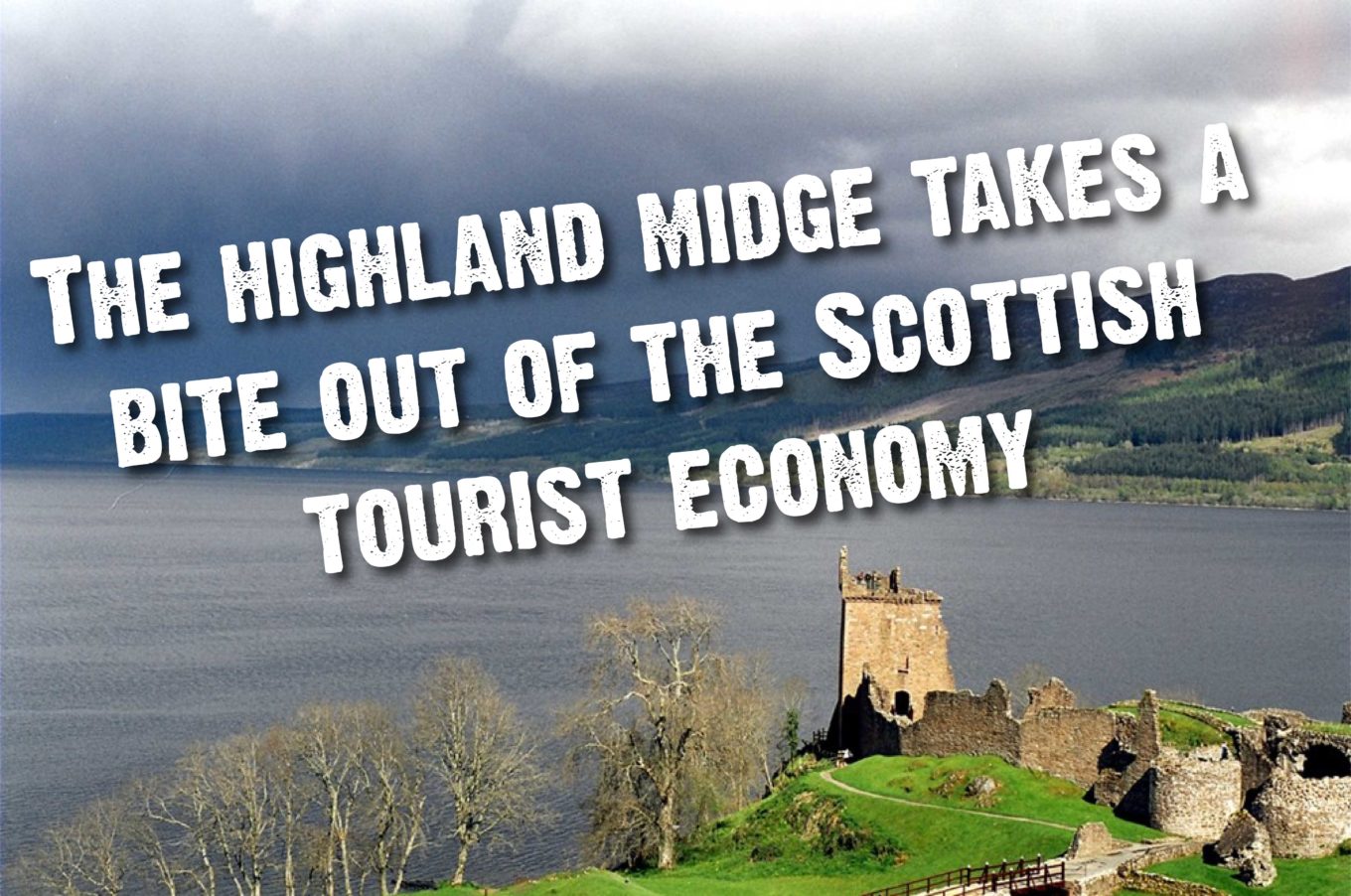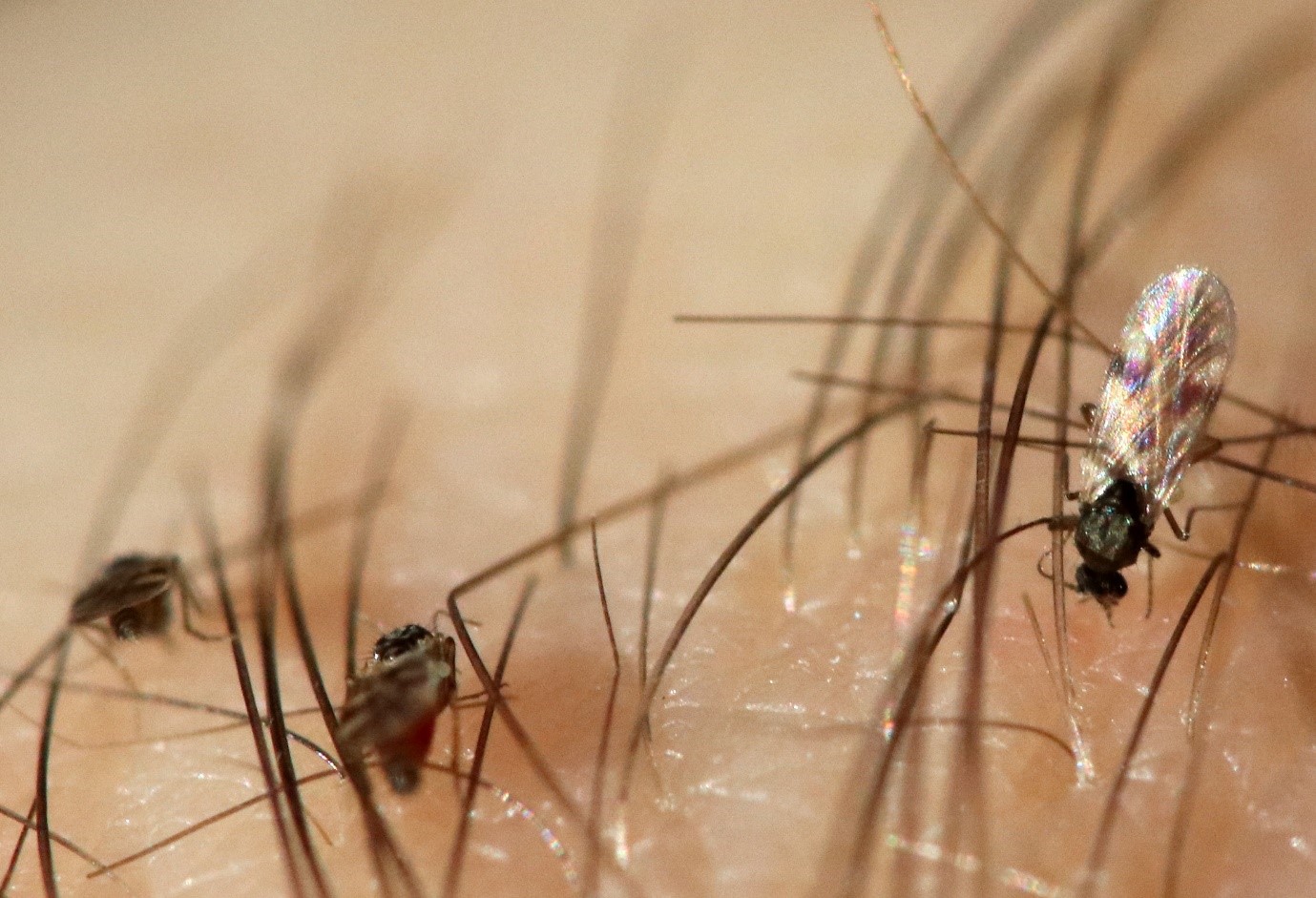
August 31st, 2018
Economic Impact of the Highland Biting Midge
By Chris Rice – Business Development Manager, ARCTEC
According to the Scottish Government, each year 156 million trips are taken in Scotland, including 2.75 million visits from overseas tourists. Many of those who visit head to the Scottish Highlands, to take in the spectacular scenery, experience life in many of the picturesque villages, or ramble on long hikes surrounded by rugged and imposing mountains. For lovers of wildlife, the Highlands offer a unique and magical experience: golden eagles, red deer and peregrine falcons range the hills, while the coast offers the opportunity to spot sea otters, dolphins and whales.
The tourists who visit make a large contribution to the Scottish economy – holidaymakers spend an estimated £9 billion per year, providing £11 billion worth of wider economic activity. In addition, the tourism industry supports approximately 200,000 jobs across Scotland. This is why it’s important, in Scotland, to keep the tourists happy, so they’ll keep returning. And while the majority of holidaymakers are undoubtedly happy with their trip, one frequent irritant threatens to impact tourism: the infamous Highland biting midge, Culicoides impunctatus. Dense, dark clouds of midges, have been known to descend on groups of ramblers, biting any exposed flesh. For those who experience this, the painful nip of the biting midge can linger long in the mind. It has been shown that when tourists suffer a biting pressure of more than 5 midge bites per hour, they change their behaviour, which may impact the length of time spent outdoors, as well as understandably diminishing the overall enjoyment of their trip. Most crucially, the memories of painful open sores and itchy weals on the surface skin may dissuade the flocks of tourists from returning.
And it’s not just tourists feeling the bite.
One study has shown that forestry workers in Scotland lost around 20% of summer working days through persistent attacks by midges[1]. Given that forestry contributes around £954 million to the wider Scottish economy, midges represent a substantial threat to income north of the border.
Figure 1 – Culicoides impunctatus feeding on exposed skin.
What can be done?
To maintain the steady flow of tourists into Scotland, there are a number of steps that can be taken, including avoidance of trips around the time of peak midge activity, as well as improving personal protection. It’s useful to know, for example, that peak midge activity occurs during May and June, with a distinct second peak recorded during September. While midges do not fare so well at cooler temperatures, a cold winter spell does not result in decreased midge numbers the following year. Indeed, following the bitterly-cold winter of 2010, when temperatures in Altnaharra in the Scottish Highlands plummeted to -22.3 °C, the spring of 2011 actually resulted in higher than average numbers of midges.
What was the reason for this upsurge? A wildlife survey reported a dramatic decrease in numbers of bats and birds during the cold spell. These are the predators that would have normally feasted on the emerging midge broods.
So if the climate can’t provide any assistance, what can tourists themselves do? When it comes to personal protection, the best advice is to keep covered up and to apply insect repellents. Unlike mosquitoes, the midge has relatively short mouth-parts, which make it difficult to bite through clothing. Instead midges will swarm around looking for exposed patches of bare skin, to make a shallow cut with their blade-like mouthparts, and then lapping up the blood pooling in the fresh wound. To ensure total midge protection, topical repellents containing DEET, PMD, Picaridin or IR3535 should be applied to any area of exposed skin. Importantly, these repellents should be re-applied every few hours – check the label for details.
By taking these few simple steps, tourists can continue to enjoy their Highlands holidays while avoiding the worst of the biting bugs. Happy travels!
References
[1] Stuart, A.E., Brooks, C.J.W., Prescott, R.J. and Blackwell, A., 2000. Repellent and antifeedant activity of salicylic acid and related compounds against the biting midge, Culicoides impunctatus (Diptera: Ceratopogonidae). Journal of medical entomology, 37(2), pp.222-227.
